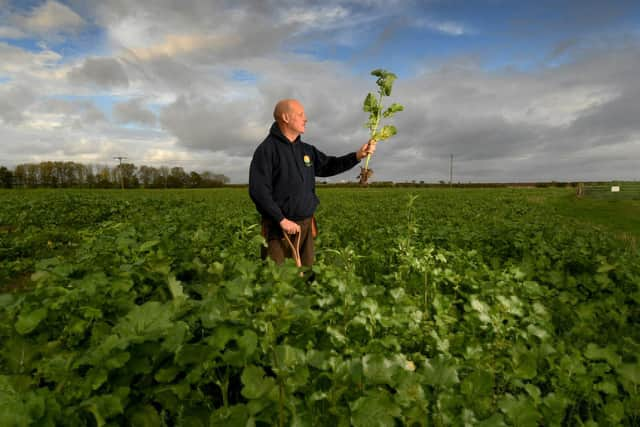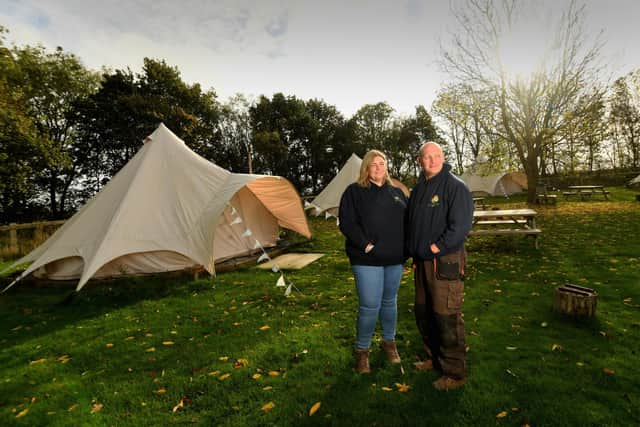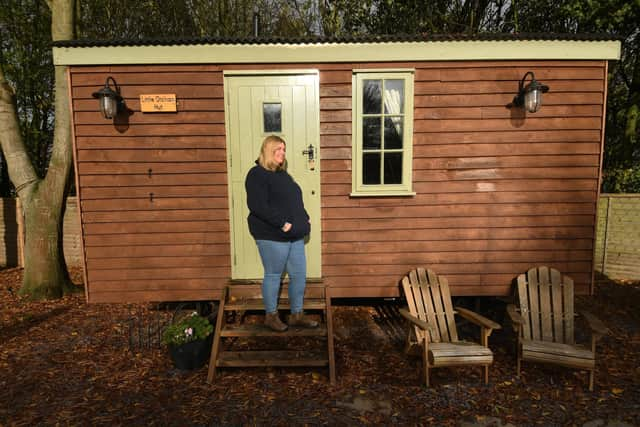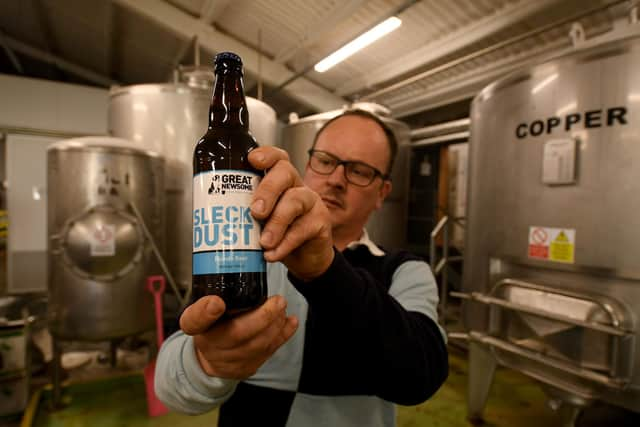Farm of the Week: No-plough policy, soil recovery and a brewery on the Holderness coast
Farming is still at the Hodgson family’s core and last week Jonathan Hodgson picked up the silver award at the British Farming Awards as Arable Farmer of the Year just two years on from having picked up the Family Farm of the Year award with his brother Matthew.
Jonathan said he felt the most recent award went their way because of newer practices they have been adopting on the 700-acre farm, how they care for the soil and how their crops are grown.
Advertisement
Hide AdAdvertisement
Hide Ad“We are trying to farm in a regenerative way. It’s about looking after the soil and ourselves better and also maintaining or improving our margin per hectare by using less inputs. We can’t control the price we receive, but we can control how much we use to help grow the crops.


“It’s very challenging and it’s exciting. We are now changing how we produce crops from what we had been taught at college years ago.
“I’ve read and heard a lot about trying to better understand soils. It is a very complex subject and has opened my eyes which has led to other possibilities, such as this year where we have planted peas and beans with oilseed rape, something I would never have done ten years ago. It’s interesting to see how much doing that will feed the crop.
It was moving away from conventional arable farming and adopting change that has brought about Jonathan’s new-found love of arable farming that has given him a new focus.
Advertisement
Hide AdAdvertisement
Hide Ad“In 2019 we purchased a strip till drill. It’s far removed from what we were doing previously in a conventional tillage system. It’s just a one-pass drill, we haven’t suddenly gone straight to no-till.


“We weren’t quite brave enough to go pure direct drill because our soil type, which is primarily medium Holderness clay, needs to adapt to change and needs to improve before it will accept a no-till drill. I hate to use the phrase that ‘we’re on a journey’ but that’s exactly where we are, and we are now at the stage where we are trying some no-till drills to see how the land performs.
“We haven’t ploughed anything for four years except for 20 acres of peas for Bird’s Eye because that’s a stipulation. Apart from that there are no cultivations undertaken on the farm. That has been the case since 2019.
Jonathan said he has been impressed with the results.
“It is quite remarkable to see how the soils have changed in the past 12 months. We’re seeing far more earthworms and the soil structure on the surface is a lot more crumbly. It now breaks up in your hands and that means it is so much easier. It’s one of those moments when you don’t believe it until you’ve seen it. It has gone through a changing process and it looks a lot better, there’s a lot more life in the soil.
Advertisement
Hide AdAdvertisement
Hide Ad

“Our clay-based soil has very high magnesium and that can tighten the soil over time, but it is improving. One of the ways in which the soil is getting better is because we’re using gypsum as a soil improver.
Great Newsome’s cropping this year was winter wheat, oilseed rape, spring beans, vining peas, spring oats, spring barley, flax and herbal leys with some crops planted together as companion crops.
Jonathan said the largest acreage of any crop is still the winter wheat.
“We harvested 240 acres of wheat, growing the varieties Typhoon, Astronomer, Costello, Theodore and Extase. Typhoon was a new variety. We do a bit of work with Limagrain, largely growing for seed, and they wanted to try Typhoon as they are finding it may be suitable for no-till, strip till systems. Astronomer was another new variety that we grew for Limagrain as a seed crop.
Advertisement
Hide AdAdvertisement
Hide Ad

“Theodore is an interesting one. It’s a variety that has slipped under the radar a bit because it’s not the highest yielder on the recommended list, but it has a fantastic disease package and I was very pleased with how that performed. It offers the opportunity of possibly creating a better margin per hectare, rather than biggest yield.
“Growing a crop is about optimising your margin per hectare. It has proved itself this year that it has potential to limit expenditure on inputs and still achieve a good margin per hectare. We’ve never put a fungus on it at all.
Oilseed rape is the second largest crop with around 100 acres and here Jonathan gives another healthy report.
“We are not seeing the decimation that some farms sadly get through flea beetle. We don’t use insecticides as a rule and manage to get a crop established. We’re growing buckwheat, vetch and berseem clover with it as companion crops.
Advertisement
Hide AdAdvertisement
Hide Ad“Companion crops are very interesting because the likes of vetch and berseem clover are producing nitrogen that we think may be available to oilseed rape in the spring. Our approach with oilseed rape is to get it in as soon as we can, get a big canopy, while the soil’s warm and there is a lot of daylight.
“We were finished with harvest 15 August this year and went straight into drilling rape and have planted a bit more. One thing we are struggling with is growing spring barley, that we use for malting in ours beers, in our system. It’s not liking our establishment techniques and so we are growing less spring barley and more rape, which is allowing us to get back into first wheat quicker.
Jonathan is trying new ideas, new tests, he’s using less inputs, his nitrogen usage is down and last year’s winter sown crops performed well with wheat averaging 10.5 tonnes per hectare and rape averaging 4.75 tonnes.
“I know every season’s different but it’s about replicating what we do and trying to make it the norm. I grew beans and oats together last year in a crop, harvested them and overall growing them together yielded a better margin together, we’re just opening up opportunities by trying new things.
Advertisement
Hide AdAdvertisement
Hide AdGreat Newsome Brewery, run by Jonathan’s brother Matthew continues to grow from strength to strength. Matthew and his wife Donna’s son James oversees the brewing, with their other son Harry working on the farm.
Donna manages the office and Jonathan’s wife Catherine manages the glamping business that includes the Little Otchan shepherd’s hut and the four bell tents.
Catherine said the bell tents have been a significant addition to the family’s overall business interests that also includes a log company.
“The Shepherd’s Hut is in its sixth year and has proved popular since we started. Last year we added the bell tents that all have their own individual private facilities including log burners, toilets and showers plus a large shared kitchen area. They are all fully furnished with a double bed, two singles and an option of a camp bed. They work really well for group bookings. We’ve also added a nature trail.